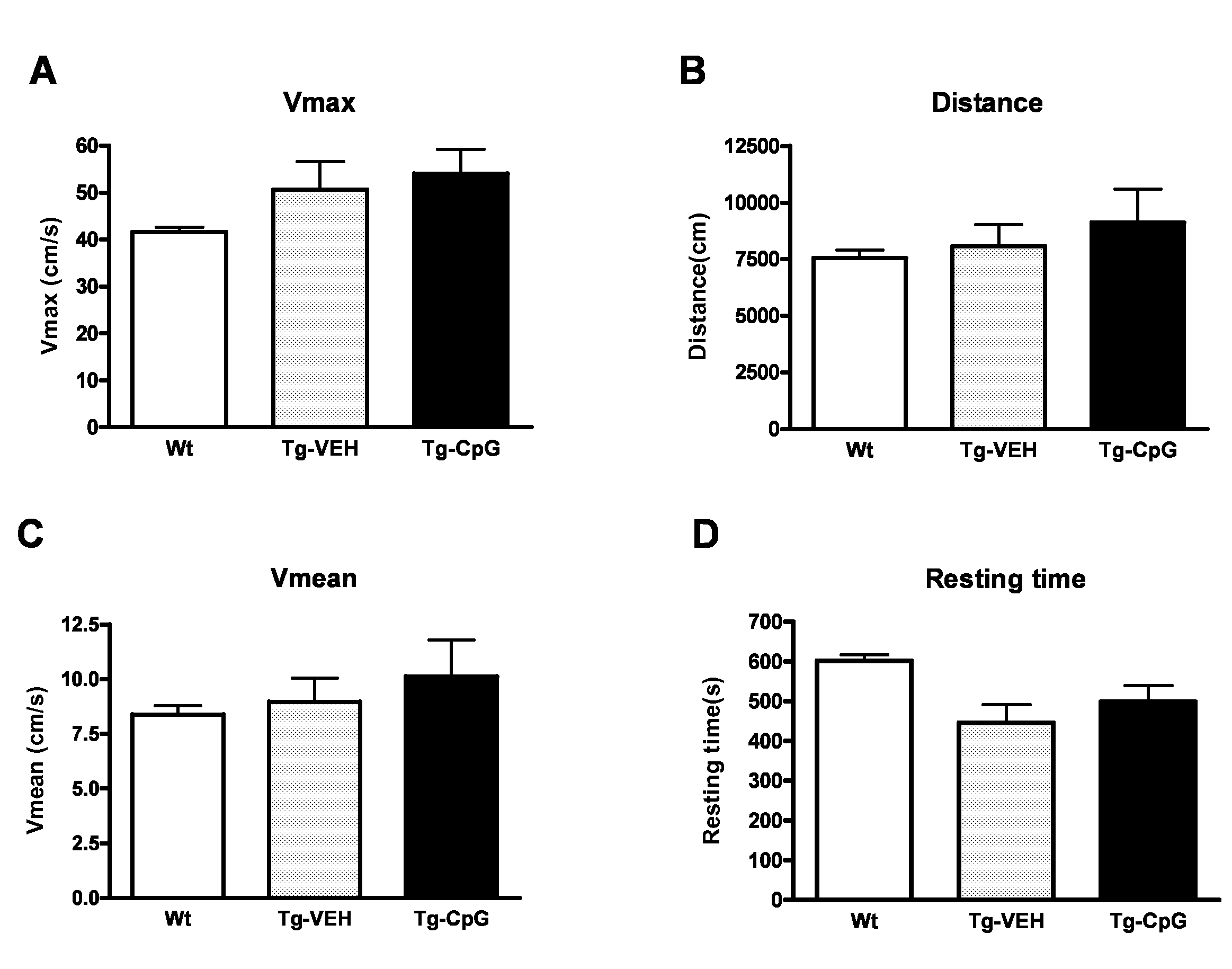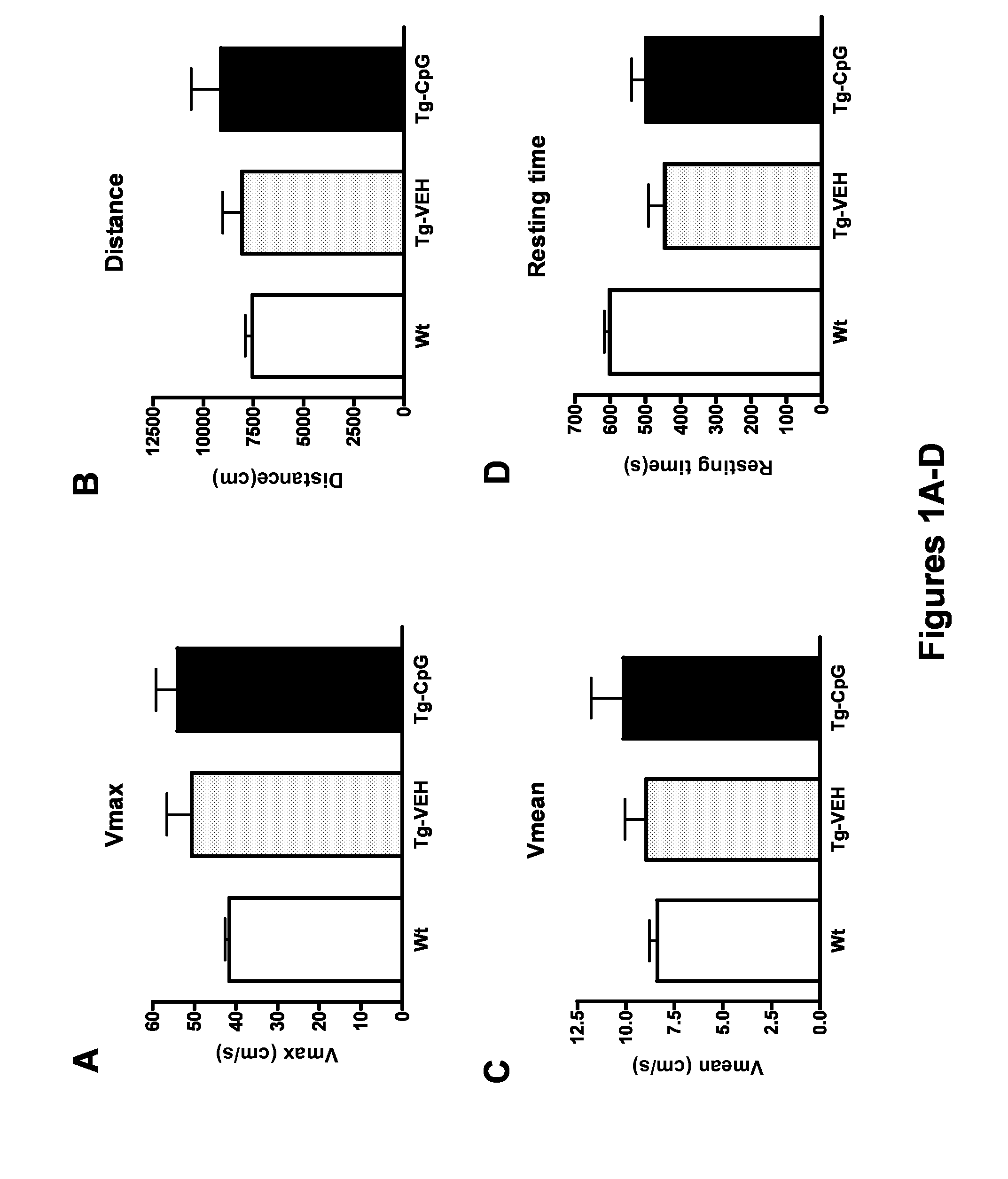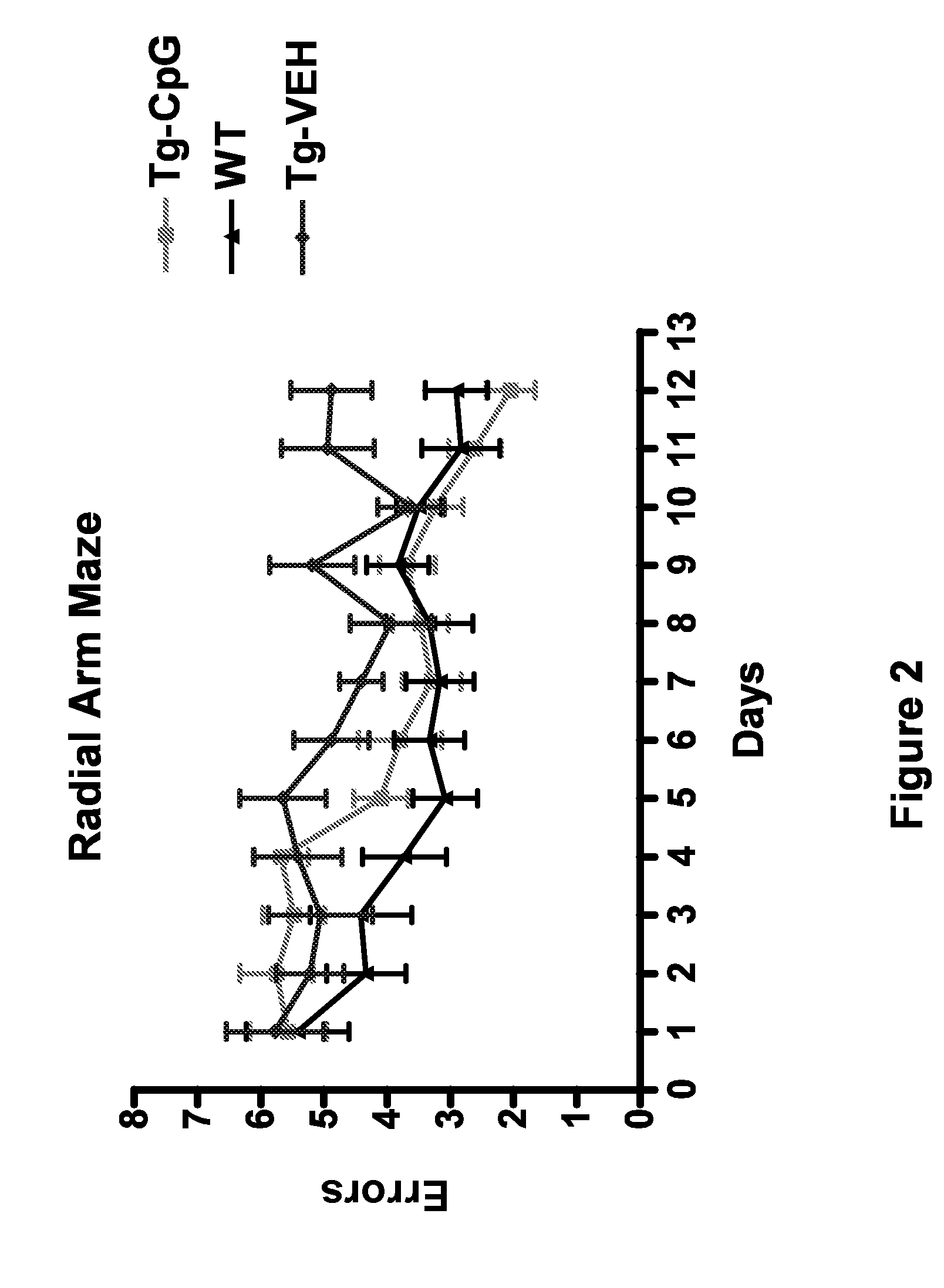Preventing and treating amyloid-beta deposition by stimulation of innate immunity
a technology of innate immunity and amyloid, which is applied in the direction of antibody medical ingredients, drug compositions, genetic material ingredients, etc., can solve the problems of patients not being able to remember family members, having trouble speaking, reading or writing, and being anxious, aggressive, and wandering from home, so as to prevent or treat cerebral amyloidosis, prevent and reduce amyloid deposition, and reduce amyloid deposits
- Summary
- Abstract
- Description
- Claims
- Application Information
AI Technical Summary
Benefits of technology
Problems solved by technology
Method used
Image
Examples
example 1
Animals and Treatment
[0065]The present examples were performed in the heterozygous Tg2576 APP mouse model (Hsiao et al., “Correlative Memory Deficits, Abeta Elevation, and Amyloid Plaques in Transgenic Mice,”Science 274:99-102 (1996), which is hereby incorporated by reference in its entirety). These mice overexpress a 695 amino acid splice form (Swedish mutation K670N M671I) of the human amyloid β precursor protein (APP) and show rapid increase in Aβ levels at approximately six months of age with Aβ deposition developing in the following months, although extensive amyloid burden is usually not observed before their second year. The Tg2576 mice used were bred internally on a C57B6 X SJL F1 background. These mice carry the recessive retinal degeneration (rd) mutation due to the SJL strain. Mice homozygous for the mutation have impaired vision and were excluded from this study. Also to reduce any confounds in the behavioral testing due to impaired vision, albino mice were excluded from...
example 2
[0067]Prior to cognitive testing, the mice were subjected to locomotor activity test. This measurement of locomotor behavioral was performed to verify that any CpG ODN treatment-related effects observed in the cognitive tasks could not be explained by differences in locomotor activity. The behavioral study was performed in twenty four CpG ODN-treated Tg animals. Twenty age-matched, vehicle-treated Tg mice and twenty five non-Tg, age-matched littermates were used as controls.
[0068]Exploratory locomotor activity was recorded in a circular open field activity chamber measuring (70 cm×70 cm). A video camera mounted above the chamber automatically recorded horizontal movements in the open field in each dimension (i.e., x, y, and two z planes). Total distance was measured in centimeters (cm) traveled and is defined as sequential movement interruptions of the animal measured relative to the background. The duration of the behavior was timed for 15 min. Results are reporte...
example 3
Autoantibody Response
[0070]The autoantibody levels were determined by 1:200 dilutions of plasma using ELISA as described previously in which 0.5 μg per well of the Aβ40 or Aβ42 peptide was coated onto microtiter wells (Immulon 2HB; Thermo Electron Corp., Milford, Mass.) (Sadowski et al., “Blocking the Apolipoprotein E / Amyloid-beta Interaction as a Potential Therapeutic Approach for Alzheimer's Disease,”Proc Nat'l Acad Sci USA 103:18787-92 (2006), which is hereby incorporated by reference in its entirety). The antibodies in plasma were detected by a goat anti-mouse IgG linked to a horseradish peroxidase conjugate (Catalog #A8786, Sigma-Aldrich, St. Louis, Mo.) at 1:3000 dilution. Tetramethyl benzidine (TMB) (Pierce, Rockford, Ill.) was the substrate.
PUM
| Property | Measurement | Unit |
|---|---|---|
| body weight | aaaaa | aaaaa |
| diameter | aaaaa | aaaaa |
| diameter | aaaaa | aaaaa |
Abstract
Description
Claims
Application Information
 Login to View More
Login to View More - R&D
- Intellectual Property
- Life Sciences
- Materials
- Tech Scout
- Unparalleled Data Quality
- Higher Quality Content
- 60% Fewer Hallucinations
Browse by: Latest US Patents, China's latest patents, Technical Efficacy Thesaurus, Application Domain, Technology Topic, Popular Technical Reports.
© 2025 PatSnap. All rights reserved.Legal|Privacy policy|Modern Slavery Act Transparency Statement|Sitemap|About US| Contact US: help@patsnap.com



